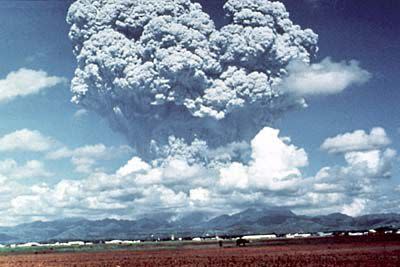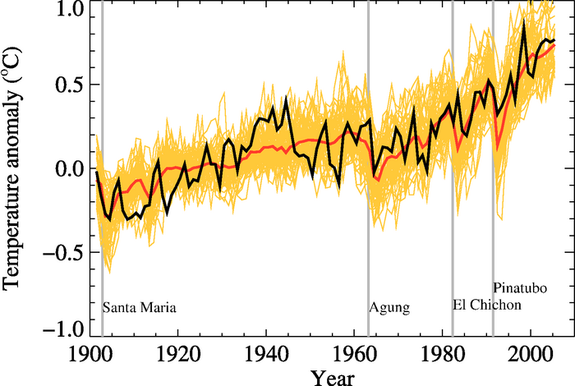How the rumbling Bali volcano could temporarily cool the globe

Scientists are carefully watching the eruption of Mount Agung, the Bali volcano that has spewed ash at least four miles into the sky and is now shaking the popular vacation island with violent tremors.
These earthquakes may portend an even greater eruption, as massive amounts of pressurized, heated magma swirl beneath the volcano.
Already, Mount Agung has affected the local populace, prompting evacuations and tainting the air. But explosive volcanoes like this one, which last had a major eruption in 1963, also have the potential to cool the global climate for one or two years.
SEE ALSO: Yes, the Yellowstone supervolcano can wipe out humanity, but we'll have years of warning
An eruption that causes a noticeable, though temporary cooling of the Earth, however, has little to do with the ominous columns of dark ash that are hurled into the air.
"The ash doesn't matter," said Alan Robock, an environmental scientist at Rutgers University and an expert on how volcanoes affect our climate, in an interview.
Instead, the driver of such cooling is a massive infusion of an invisible gas, sulfur dioxide, into the high atmosphere above our clouds, rain, and weather. "What matters is the chemistry of the stuff that’s being ejected — and how it's ejected," said Robock.
Latest GOME-2 satellite SO2 data shows the SO2 plume from #Agung being drawn west towards Tropical Cyclone Cempaka to the south of Java. @id_magma @BNPB_Indonesia @Sutopo_BNPB
Source: https://t.co/OHmUcXenWf pic.twitter.com/brNlZvhngF— Simon Carn (@simoncarn) November 28, 2017
If a volcano doesn't blow this invisible gas some 12 or 13 miles into the atmosphere — a region called the stratosphere — then the gas and particulate matter won't have a chance to cool the Earth. "It has to be a very strong explosive plume or jet of gases," Robock explained.
The 1980 Mount St. Helens blast — the most disastrous eruption in U.S history — sent ash 15 miles into the sky, blew down millions of trees, spread ash into 11 states, and blew up a good portion of the mountain itself. But the eruption didn't send much sulfur dioxide into the stratosphere, so the eruption didn't have a temporary global cooling effect.

Image: usgs
Once high in the sky, sulfur dioxide reacts with water to produce droplets that can linger for a year or more, Robock said. And when sunlight hits these droplets, energy is reflected back into space, depriving Earth of substantial amounts of sunlight.
After one or two years, these sulfur dioxide-infused water droplets grow too big and fall back to Earth.
So if Mount Agung erupts violently, but doesn't sends massive amounts of sulfur dioxide into the air — or doesn't send it high enough — a longer-term global effect is unlikely.
If this eruption is like previous eruptions of this volcano, though, then it will likely blast a significant amount of sulfur dioxide into the air.
"We know Agung put a lot of sulfur dioxide into the atmosphere in 1963, so we know it's got the right chemistry," said Robock. "But it has to have a much bigger eruption than has occurred so far."

Image: ipcc fourth assessment report 2007.
Unlike volcanoes, in say, Alaska, Agung's erupted gases would also have a lot of help getting transported around the world and reflecting even more sunlight. Bali lies in the tropics, and the high stratospheric winds here would "would gradually blow it around the world to both hemispheres," Robock said.
Additionally, he notes, the tropics are home to bountiful, year-round sunlight, so an ample amount of solar energy would constantly be driven away by high altitude sulfur dioxide droplets.
If this were to occur — like on the scale of the 1991 Mount Pinatubo eruption in the Philippines, which sent some 20 billion tons of sulfur dioxide into the sky — the cooling would be noticeable. The global average temperature would be about one degree Fahrenheit cooler, but in interior North America or Asia, temperatures could be as much as five degrees cooler during the summer, says Robock.
But before any sort temporary global cooling can occur, Mount Agung would first need to erupt far more violently. For now, as denizens of Bali flee the areas immediately around the volcano, it's certainly threatening to.
WATCH: Exploring volcanoes with robots: a day in the life of Carolyn Parcheta

